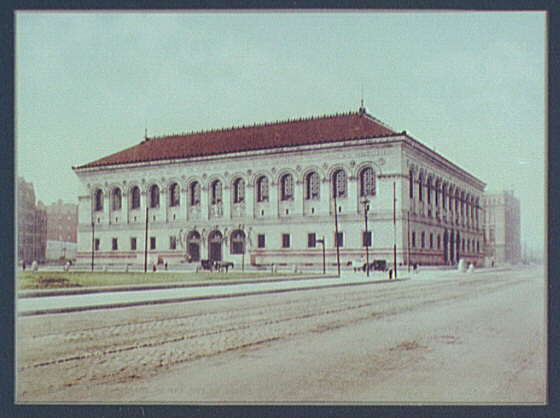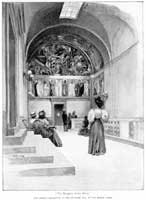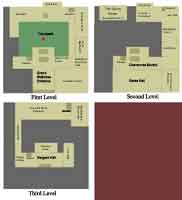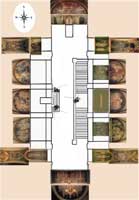|
Boston
Public Library
Jpg: Library
of Congress
The Boston Public
Library (built
between 1887--1895) was designed by Charles McKim of McKim, Mead and
White, Architects. Intended to be clearly derived from the Italian
Renaissance
palazzo -- square with a central open court, it evoked the principles
of
the Ecole des Beaux-Arts coming from the foundation of Classical and
Renaissance
understanding and not necessarily a copy of any one particular
structure.
Built from public
money and decorated
from private funds with classical themes, it was
to "hold its own," according to Samuel A.B. Abbott, the president of
the
Library Trustees, "beside any of the great works of the great
architects
of the Renaissance." [1]
It would become one
of the first
personifications of stone and mortar (on a permanent basis and of such
a scale) for the men of the City Beautiful Moment.
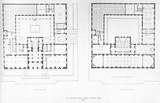
1st
& 2nd floor plan of the Library
by
McKim, Mead and White, architects
(Sargent's
murals would be on a 3rd floor not shown)
By 1890, with the
building's construction
fully underway, they turned their attention to its decoration. Charles
McKim would meet with the sculptor Augustus Saint-Gaudens, and painters
Edwin Austin Abbey and John Singer Sargent. Afterward, McKim would
quickly write
to the Library trustees to get their approval.
Ultimately, there
would be three
major mural projects. Abbey would paint "The Quest of the Holy
Grail"
decorating the main Book
Delivery
room. Puvis de Chavannes would paint "The Muses of Inspiration
Hail the Spirit," adorning the walls of the building's grand front
staircase in eight stairway murals representing disciplines of
poetry,
philosophy, and science; and "The Barbinger of Light,"
decorating
the second floor gallery.
Sargent would paint "The History of
Religion"
which would decorate the the third floor hallway and what is now called
"Sargent's Hall."
Although planned
well before, the
first installation of murals in 1895 would come on the heels of the World
Columbian Exposition of Chicago of 1893; and in the public's eye,
the
Library stood as a continuation of the American Renaissance displayed
in
its ideal during the Worlds Fair.
After the '95
installation, and
with the expanded project for Sargent's portion, John would lease space
for a second studio on Fulham Road, in London.
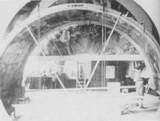
Fulham
Road Studio, London
By 1919, the project
was completed.
After the 1916 installation, which was the largest, Sargent
gave a full explanation of the murals' meaning.
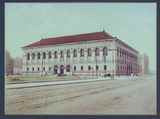
Boston
Public Library
Reset Frames
Notes:
1) S.A.B. Abbott to
Charles F. McKim,
November 28, 1889, McKim Collection, The Library of Congress,
Washington, D.C.

|
